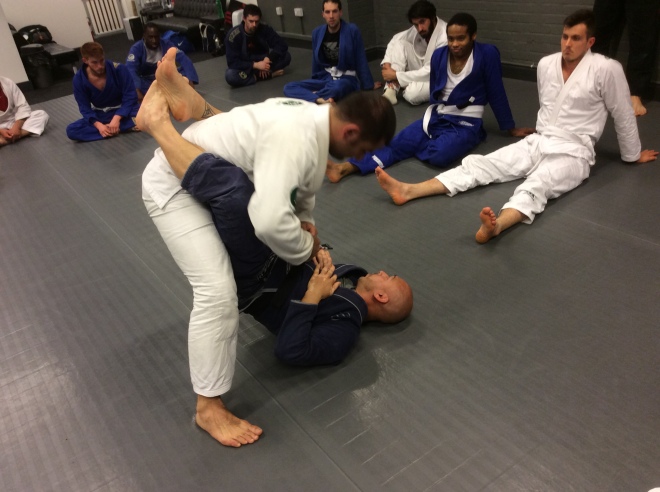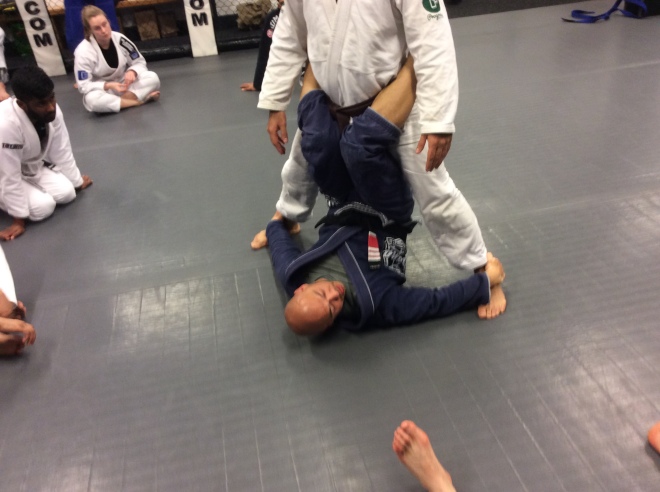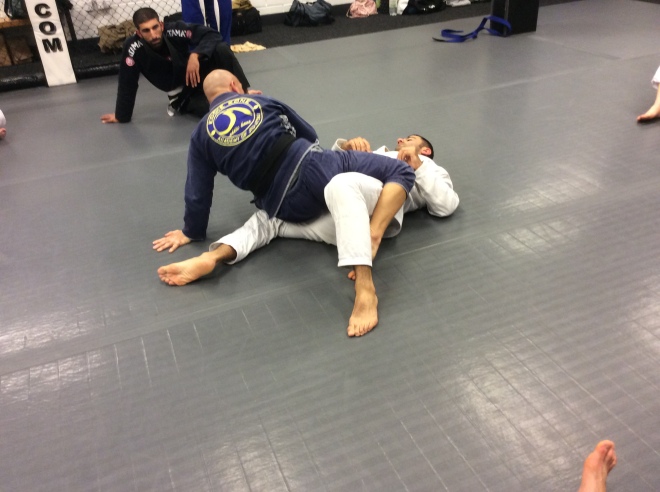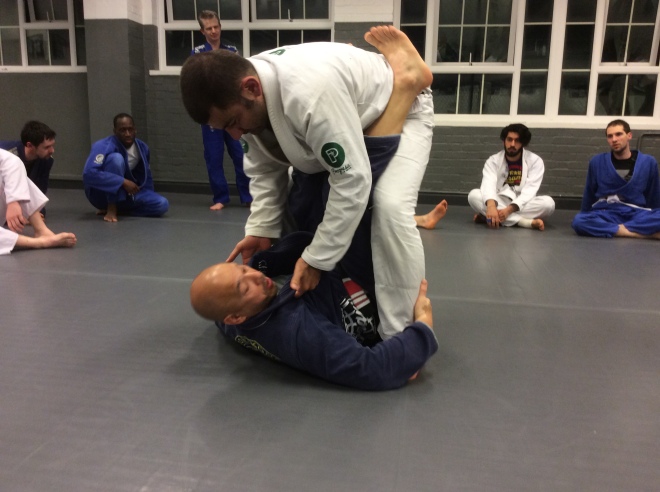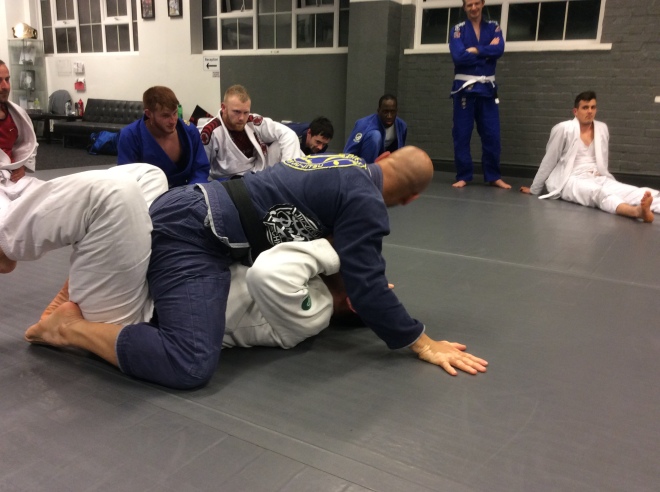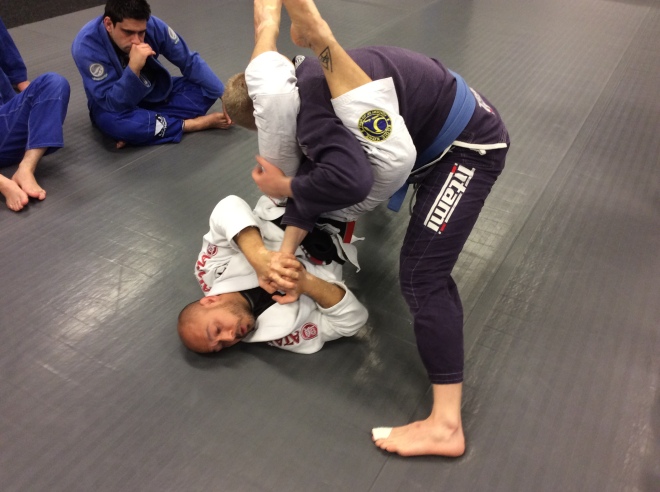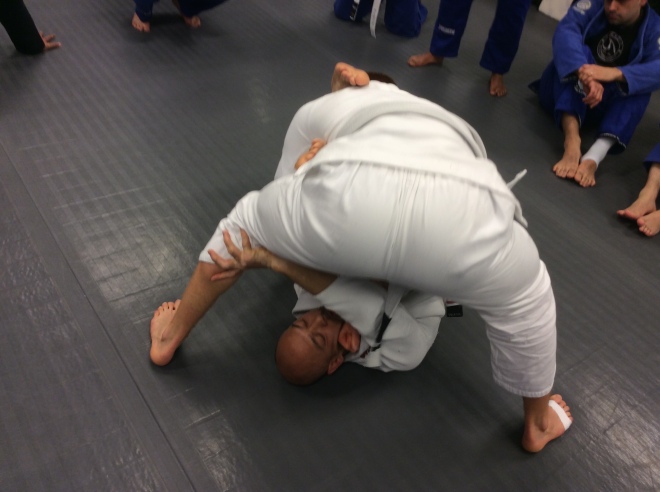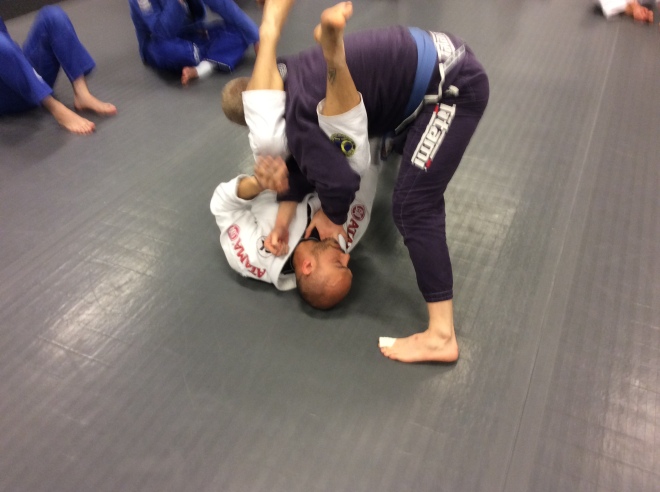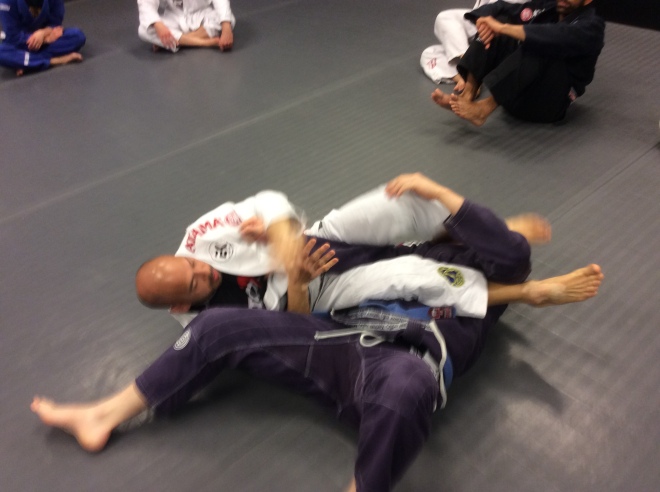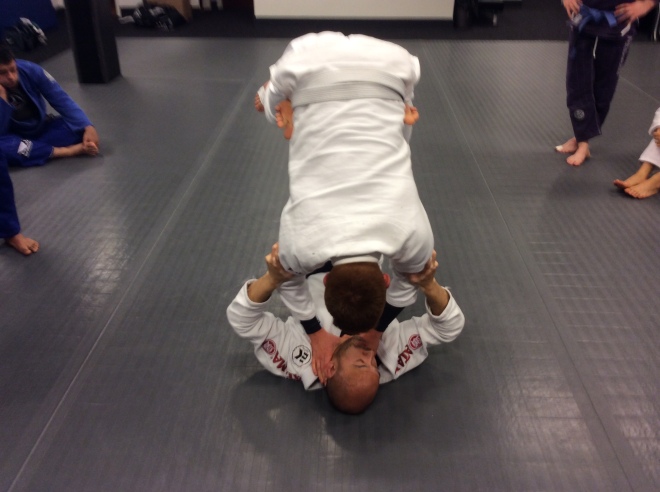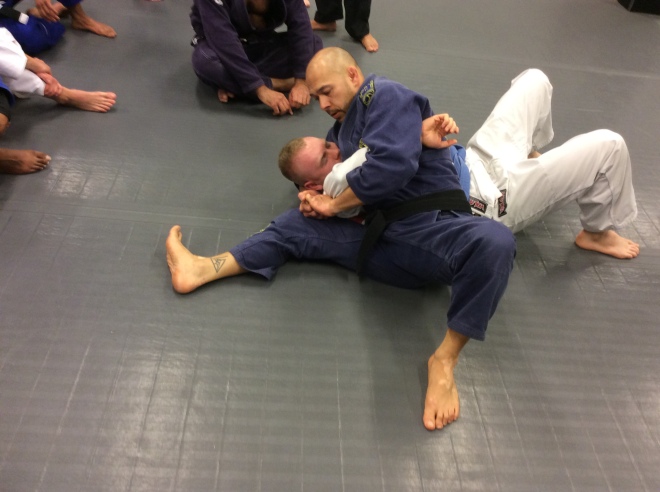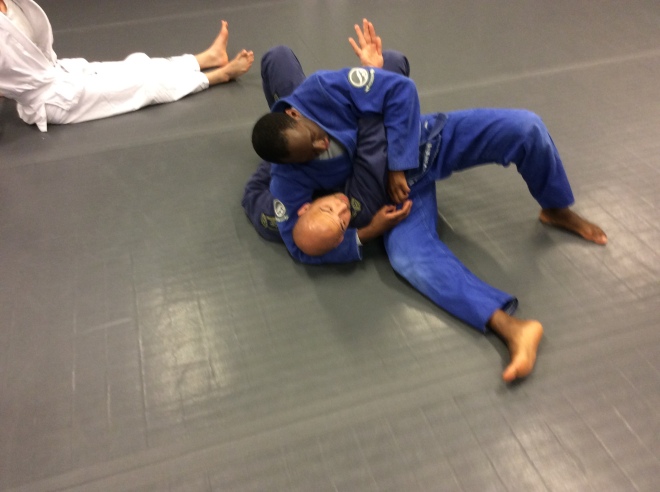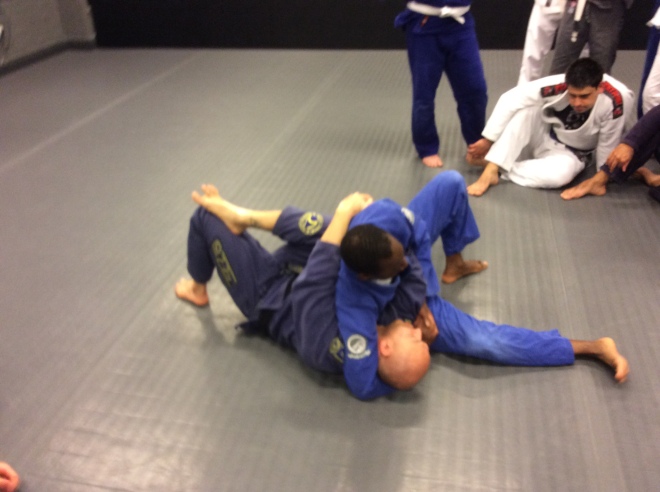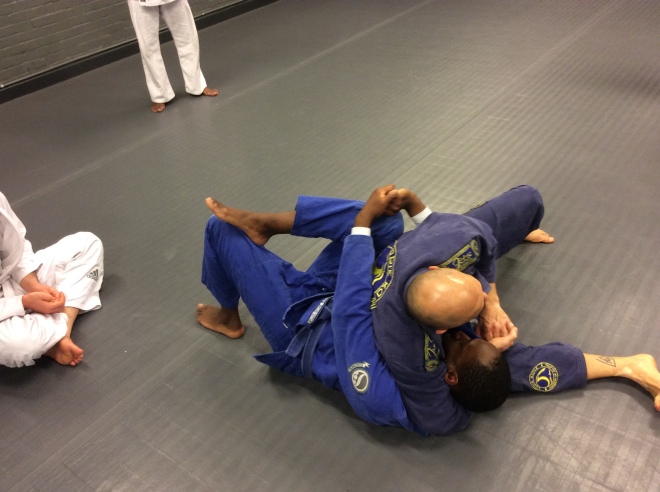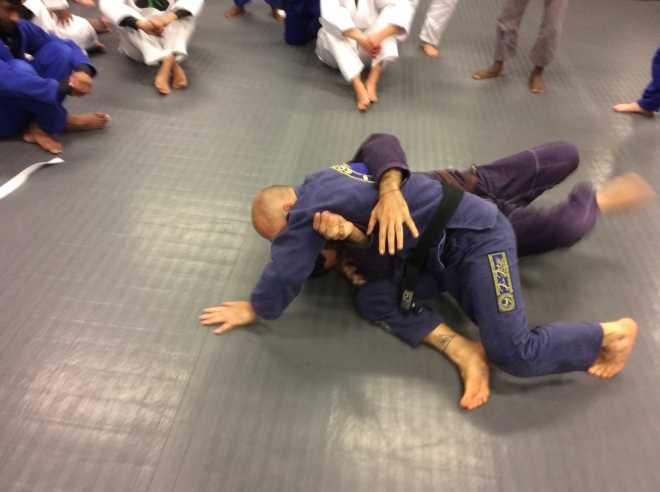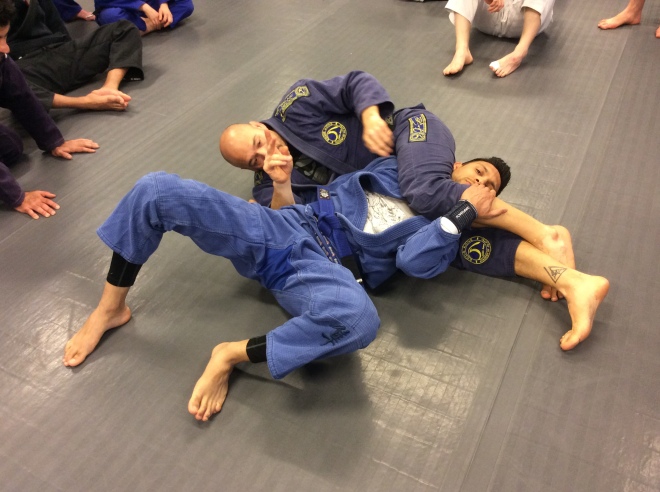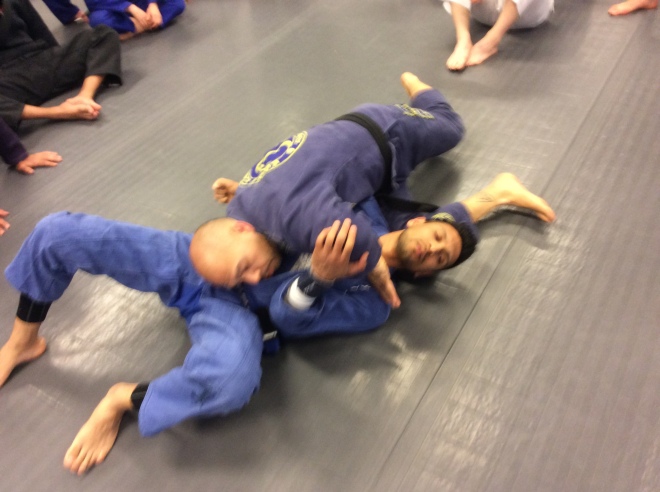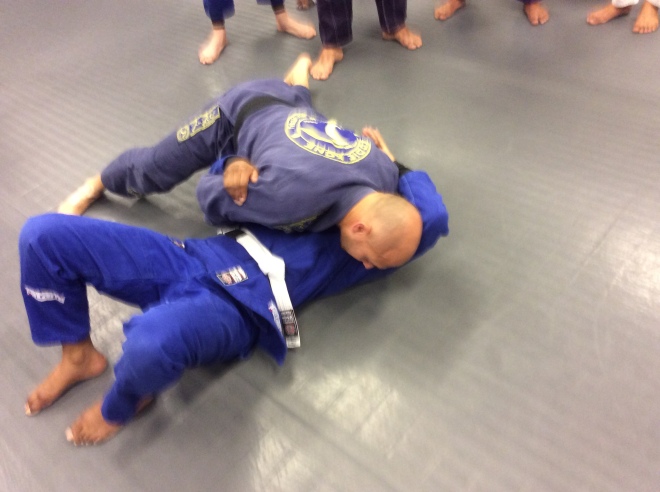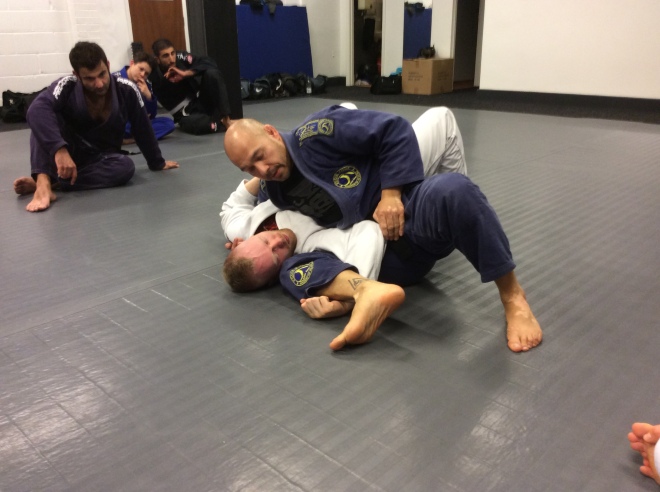For those of you wondering Gandalf? it’s a Lord of the Rings reference… more importantly the Professor kicked off the week discussing the format for this week’s lessons and touched on the details we learnt from last week. This week would see progression towards techniques to putting people into the guard. But before going into those details he had designs on teaching us a guard pass so good it will work on anyone, even black belts!
We kicked the lesson off with a warm-up, consisting off running, side-stepping and then into an interesting exercise which was geared at posture and connections when in a standing circumstance. The Professor also reminded us all that jiu-jitsu does start standing up and all the concepts of connections still apply!
After we completed the exercises, the professor proceeded to guide us through the basics of the guard pass.
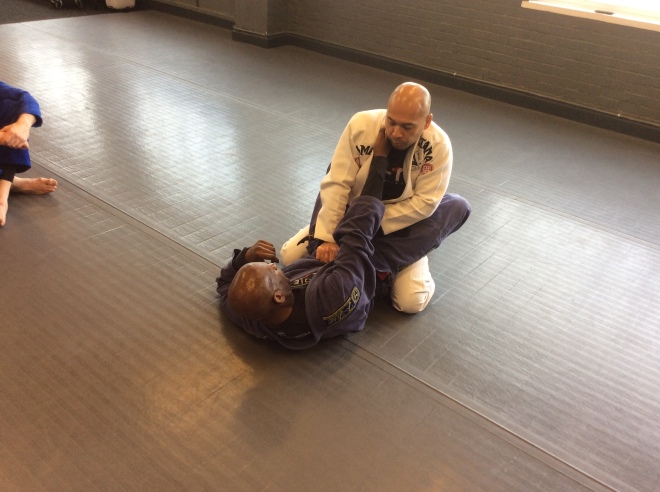
The importance of connections were again paramount, down to the posture in the guard, positioning of the knees, positioning of the arm on the person’s waist. The initiation of the guard pass was interesting as it seemed to depend on the person, who has you in their guard, attempting to pull you down into the guard to control you. Normally done by grabbing the collar, from here Professor demonstrated techniques to prevent or make it very difficult to pull you down into the guard, even if the person is extremely strong.
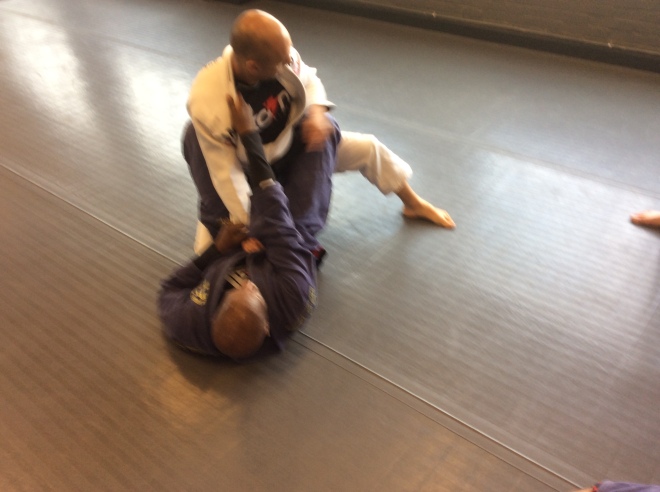
Then maintaining strong connections to the person in the guard to open the guard or force them to open the guard. With this done, working the position around the leg and driving your body forward to put the person at the bottom in an uncomfortable position as you move round to obtain a cross body position.
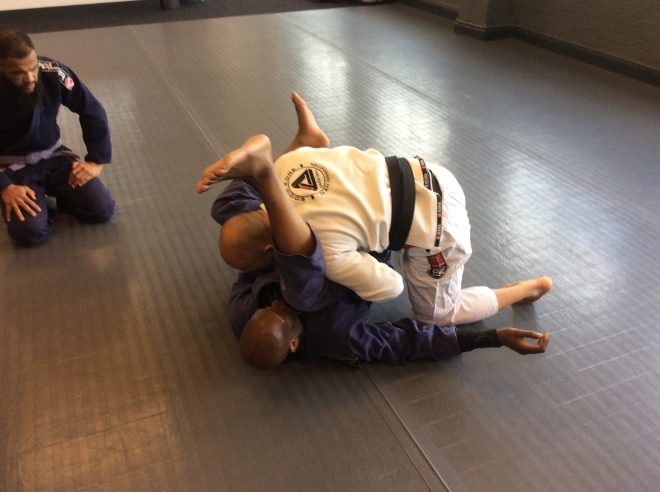
We practiced this a few times, with the Professor breaking us at different points to correct common mistakes being made. He also demonstrated on different individuals and using different body types to demonstrate for him, under his direct instruction to prove a point on certain details.
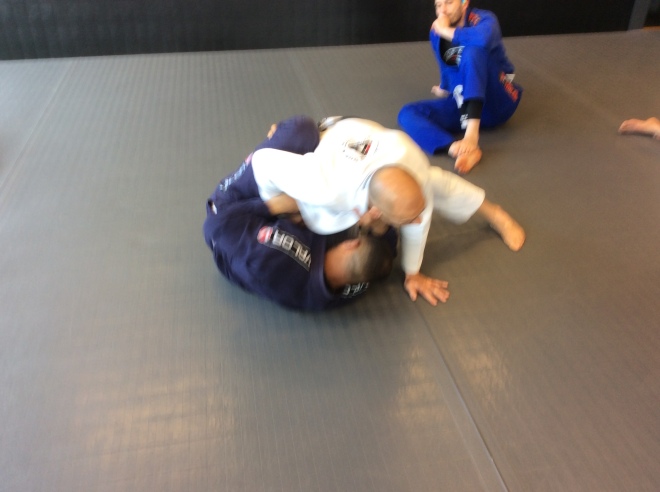
The lesson concluded there, with the Professor recapping the importance of certain connections when attempting this pass, also mentioned a lot was maintaining proper structure in positions to make the pass possible.
My thoughts, I struggled with this particular technique mainly due to the position i needed to have when inside someone’s guard. Sitting on my knees put pressure on my ankles which had always been uncomfortable for me and doing this no exception. It appears i’ll need to find a way of getting comfortable to be able to do this pass.
“Tapping out!”

